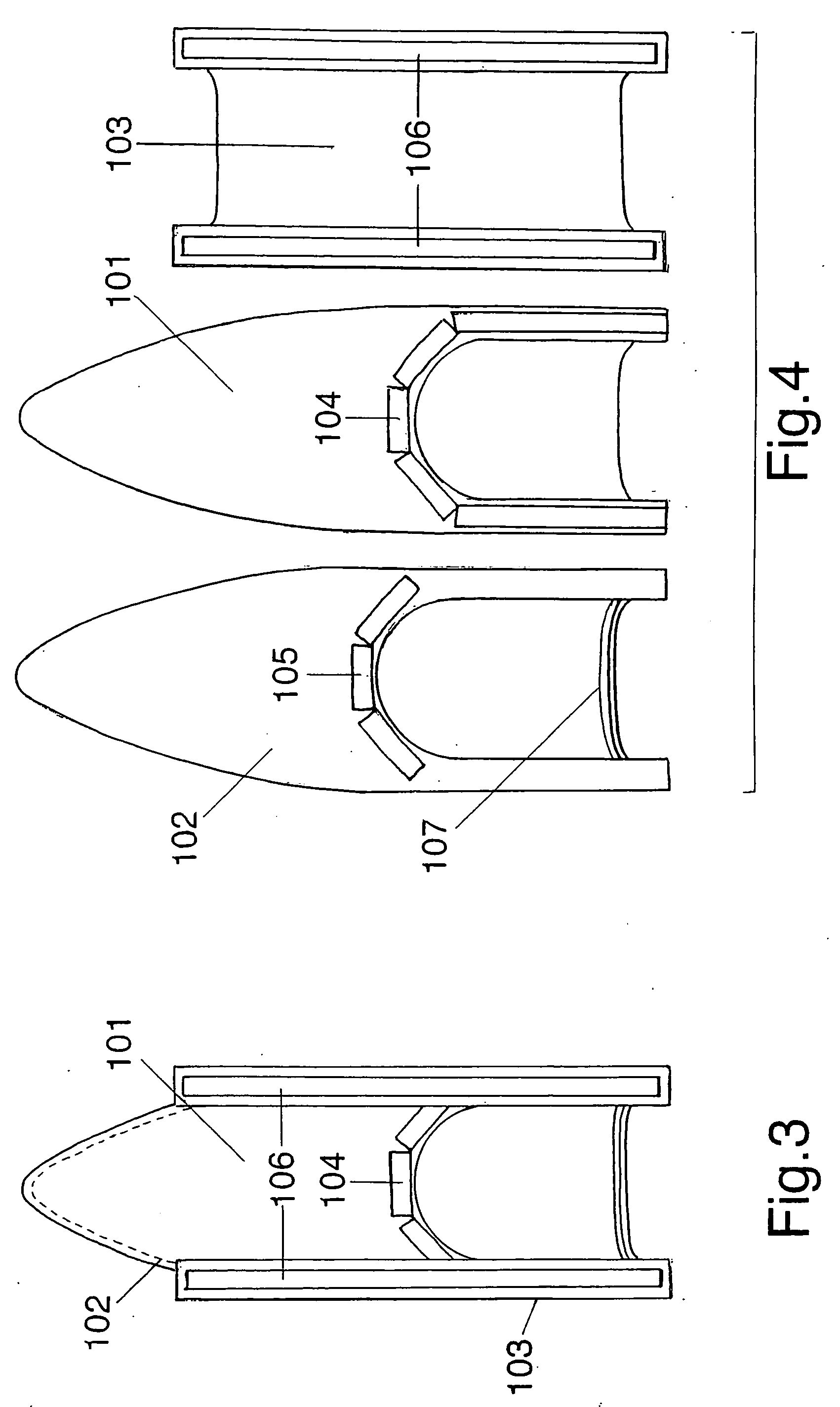Portable boat in nesting sections, with waterproof fabric cover incorporating a stabilizing keel
a waterproof fabric cover and keel technology, applied in the field of portable boats, can solve the problems of not being aerodynamic, fast or maneuverable, cutting, etc., and achieve the effects of enhancing rigidity, facilitating insertion, and relatively minor innovations in the structure of the skinboa
- Summary
- Abstract
- Description
- Claims
- Application Information
AI Technical Summary
Benefits of technology
Problems solved by technology
Method used
Image
Examples
first embodiment
[0042]First embodiment, the boat in storage and portage mode: FIG. 1a: the boat, a kayak-type form, consists of two nearly equal halves, or collapsible rigid hull members: prow, #101 and stern, #102. This frontal view shows the boat in portage and storage mode, with stern nested within the prow, prow section completely overlapping and containing the stern section, with the fitted waterproof fabric cover, flexible releasably attachable coaming ring, and other equipment stowed inside. Around the cockpit edge are five hook and loop fastener strips #104: three short ones around the front curve of the cockpit opening edge, two long ones along the cockpit sides. These will later to be used to attach the fitted waterproof fabric cover, which has matching hook and loop fastener strips sewn to the underside of the cockpit edge. In portage mode, slipped into a simple carry bag, it can be carried like a large backpack. Or it can easily be wheeled on a luggage carrier.
[0043]FIG. 1b shows the ne...
second embodiment
[0052]FIG. 13 shows a port side view of the second embodiment, assembled and with the fitted waterproof fabric cover #108A in place. Note #111, the elongated coaming, indicating an elongated cockpit, #109, the seam running longitudinally from the point of the prow to the point of the stern, and separating the body of the cover enclosing the hull from the flexible stabilizing keel #110. It is the addition of this keel, which is made using the extra long seam allowance from the above-mentioned seam that lets the boat have the kind of slender proportions which make it far faster, more maneuverable, and more fun to paddle than most recreational boats of this length.
[0053]About boat proportions as they relate to keels: Because size and weight are crucial to portability, a portable boat should be limited in dimensions. About the smallest a small recreational boat can be and still be considered safe is nine feet, or about three meters. But small boats are normally made extra wide, approxim...
PUM
 Login to View More
Login to View More Abstract
Description
Claims
Application Information
 Login to View More
Login to View More - R&D
- Intellectual Property
- Life Sciences
- Materials
- Tech Scout
- Unparalleled Data Quality
- Higher Quality Content
- 60% Fewer Hallucinations
Browse by: Latest US Patents, China's latest patents, Technical Efficacy Thesaurus, Application Domain, Technology Topic, Popular Technical Reports.
© 2025 PatSnap. All rights reserved.Legal|Privacy policy|Modern Slavery Act Transparency Statement|Sitemap|About US| Contact US: help@patsnap.com



